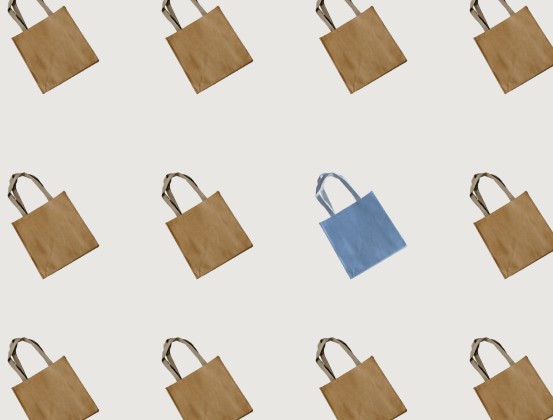

Article
•
November 4, 2025
What makes a good loyalty reward?
A good loyalty reward does more than give something away. It creates a reason to come back. The best rewards make customers feel appreciated, not manipulated. They bridge the gap between "thanks for buying" and "we'd love to see you again."
For small shops, cafés, and salons, a well-designed loyalty reward can transform casual customers into regulars. But too often, businesses overcomplicate it or miss what actually motivates people. Here's what makes a good loyalty reward tick.
It feels achievable
The first rule of loyalty rewards: make them attainable. If customers have to spend $500 or visit ten times before earning anything, they'll lose interest. A study from Yotpo found that 79% of consumers say they're more likely to participate in a program if rewards are easy to earn.
Think about your regulars. If they typically visit once or twice a week, your reward cycle should feel within reach in a month or two, not half a year. For example, a "buy 5 coffees, get 1 free" card hits the sweet spot: simple, fast, and fair.
It matches the customer's motivation
Good rewards aren't always discounts. In fact, money off isn't even the most effective motivator. People crave exclusivity, convenience, and recognition. A free drink on a birthday, early access to a seasonal menu, or a special invite to a small event can all feel more personal and more memorable than a generic 10% off.
A Deloitte report shows that emotional connection drives loyalty more strongly than financial incentives alone. So if you can make your customer feel like part of something, your rewards will go further.
It's clearly communicated
If your customers don't know what the reward is, how to earn it, or when they've earned it, it might as well not exist. The simpler and more visible your system, the better.
That's why digital loyalty cards like the ones in CHCKN work so well. Customers can see their progress right in their digital wallet, next to the cards they use daily. It keeps your business top-of-mind every time they pay somewhere else.
Compare that to a hidden, POS-only system like Square Loyalty, where customers often don't even realize they're earning rewards. Visibility breeds engagement.
It feels like a "thank you," not a marketing tactic
A reward should feel genuine. When it's presented as a "thank you" for supporting your business, people are happy to return. When it feels like a trick to get them to spend more, they tune out.
Keep your tone conversational. "Your next one's on us" feels warm. "Earn points toward future purchases" feels corporate. You're not running an airline. You're running a local business.
It encourages repeat visits, not just one big spend
Many programs push customers to spend more in a single visit. That's fine, but a better long-term strategy is to encourage consistent visits. For small businesses, loyalty is about frequency, not just revenue per ticket.
For example, a nail salon that offers "every 5th visit 20% off" keeps customers returning on schedule. A café that gives a free pastry after a set number of drinks gets people through the door again and again. Small incentives, used strategically, build habit.
It fits your margins
Finally, a reward that hurts your bottom line isn't sustainable. The best loyalty programs align with what you can afford to give while still offering real value. A 10% discount might be fine for a high-margin item like coffee, but painful for a restaurant meal. Instead, focus on perceived value—something customers feel is special but costs you little.
Free upgrades, early access, or "members-only" events work beautifully here. You're rewarding loyalty without discounting your worth.
The bottom line
A good loyalty reward doesn't have to be fancy. It has to be human. It should feel achievable, personal, visible, and aligned with your brand's personality. When done right, it becomes less about the transaction and more about the relationship.
For local businesses, that's where real loyalty begins.
For small shops, cafés, and salons, a well-designed loyalty reward can transform casual customers into regulars. But too often, businesses overcomplicate it or miss what actually motivates people. Here's what makes a good loyalty reward tick.
It feels achievable
The first rule of loyalty rewards: make them attainable. If customers have to spend $500 or visit ten times before earning anything, they'll lose interest. A study from Yotpo found that 79% of consumers say they're more likely to participate in a program if rewards are easy to earn.
Think about your regulars. If they typically visit once or twice a week, your reward cycle should feel within reach in a month or two, not half a year. For example, a "buy 5 coffees, get 1 free" card hits the sweet spot: simple, fast, and fair.
It matches the customer's motivation
Good rewards aren't always discounts. In fact, money off isn't even the most effective motivator. People crave exclusivity, convenience, and recognition. A free drink on a birthday, early access to a seasonal menu, or a special invite to a small event can all feel more personal and more memorable than a generic 10% off.
A Deloitte report shows that emotional connection drives loyalty more strongly than financial incentives alone. So if you can make your customer feel like part of something, your rewards will go further.
It's clearly communicated
If your customers don't know what the reward is, how to earn it, or when they've earned it, it might as well not exist. The simpler and more visible your system, the better.
That's why digital loyalty cards like the ones in CHCKN work so well. Customers can see their progress right in their digital wallet, next to the cards they use daily. It keeps your business top-of-mind every time they pay somewhere else.
Compare that to a hidden, POS-only system like Square Loyalty, where customers often don't even realize they're earning rewards. Visibility breeds engagement.
It feels like a "thank you," not a marketing tactic
A reward should feel genuine. When it's presented as a "thank you" for supporting your business, people are happy to return. When it feels like a trick to get them to spend more, they tune out.
Keep your tone conversational. "Your next one's on us" feels warm. "Earn points toward future purchases" feels corporate. You're not running an airline. You're running a local business.
It encourages repeat visits, not just one big spend
Many programs push customers to spend more in a single visit. That's fine, but a better long-term strategy is to encourage consistent visits. For small businesses, loyalty is about frequency, not just revenue per ticket.
For example, a nail salon that offers "every 5th visit 20% off" keeps customers returning on schedule. A café that gives a free pastry after a set number of drinks gets people through the door again and again. Small incentives, used strategically, build habit.
It fits your margins
Finally, a reward that hurts your bottom line isn't sustainable. The best loyalty programs align with what you can afford to give while still offering real value. A 10% discount might be fine for a high-margin item like coffee, but painful for a restaurant meal. Instead, focus on perceived value—something customers feel is special but costs you little.
Free upgrades, early access, or "members-only" events work beautifully here. You're rewarding loyalty without discounting your worth.
The bottom line
A good loyalty reward doesn't have to be fancy. It has to be human. It should feel achievable, personal, visible, and aligned with your brand's personality. When done right, it becomes less about the transaction and more about the relationship.
For local businesses, that's where real loyalty begins.
Share
X
Share
X
Ready to bring customers back?
CHCKN helps you reward regulars, grow your list, and make every visit count.
Ready to bring customers back?
CHCKN helps you reward regulars, grow your list, and make every visit count.

